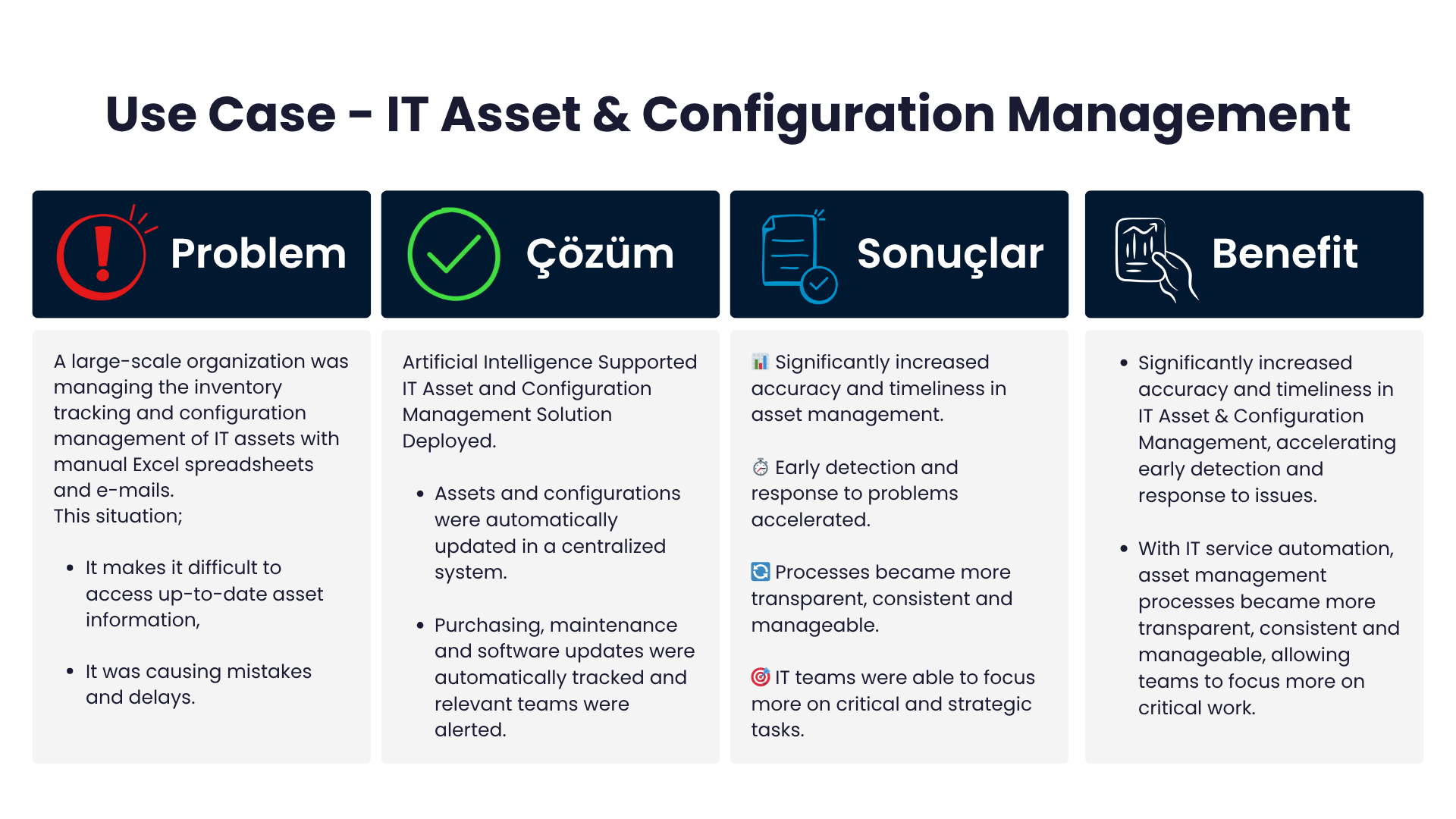
IT departments form the backbone of organizations of all sizes. However, these teams are faced with a wide range of tasks, from recruitment processes to system maintenance, from user requests to support tickets. Over time, these multifaceted responsibilities can both strain human resources and hamper operational efficiency. Especially teams that are busy with manual and repetitive tasks cannot devote enough time to more strategic projects. This is where IT service automation comes into play and minimizes the need for manual intervention by automating repetitive tasks with artificial intelligence.
IT service automation plays a critical role in easing the burden on IT teams and managing business processes more effectively. For example, when a support ticket is created, trigger-action mechanisms such as the system automatically routing the ticket to the appropriate person accelerate processes and reduce the margin of error. This allows IT teams to focus their energy on innovation and growth-oriented work instead of routine tasks. IT service automation not only reduces operational burden, but also lays the foundation for a more agile, scalable and user-centric IT infrastructure.
Benefits of IT Service Automation
Today, IT service automation is evolving with AI and machine learning into intelligent process automation. It also improves decision-making processes while offering process efficiency, business agility, compliance and cost advantages. In this way, businesses can quickly adapt to changing needs without the need for complex update and testing processes.
The efficient operation of IT operations centers (NOC) is directly related to the quality of the operation, especially in large and distributed systems. At this point, ODYA Automated NOC solution makes it possible to realize fast, accurate and automatic interventions to incidents by making sense of the data from monitoring systems.
YOUTUBE ->
ODYA Automated NOC automatically converts alarms from monitoring systems into tickets. This reduces the manual processing load and accelerates incident management. The system analyzes alarms according to their content, compares them with historical data and automatically determines the criticality level of events. According to this classification, search chains are created, so that:
- Critical incidents are responded to immediately,
- The risk of human error is minimized,
- Operational prioritization becomes more accurate.
AI-powered systems also dramatically reduce resolution times by triggering automated resolution procedures for recurring events. Response times of several minutes in traditional structures are reduced to just a few seconds thanks to AI-powered automation.
Most importantly, AI can predict potential problems by analyzing historical incident data. With this capability, IT teams can not only respond to incidents with a proactive approach, but also prevent problems before they occur.
More specifically, IT service automation offers the following benefits:
1. With real-time data and analytics, businesses can quickly adapt to changing conditions, expand to new locations and easily reach different demographics.
2. AI support can predict potential failures or outages by analyzing past events. With this predictive capability, IT teams can not only react to issues as they arise, but also adopt a preventive maintenance strategy, preventing them before they happen. This reduces downtime, increases system continuity and dramatically improves operational efficiency.
3. Automation of repetitive manual tasks, such as user password reset requests or routine approvals and reporting on Excel and Word documents, reduces time and cost losses, minimizes errors, speeds response times and allows IT teams to focus on strategic projects.
Meet Cheetah Low-Code Platform to digitize manual work processes – get started quickly without writing code, transform your IT Service Management workflows with AI support!
IT Service Automation Use Cases

A Strategic Perspective on IT Service Automation with Artificial Intelligence
When a task is automated with IT service automation, it is usually executed in the same way and without interruption. This is advantageous for consistency, but it can fall short of adapting to changing circumstances. This is where artificial intelligence (AI) and machine learning (ML) come in, giving IT service automation flexibility and context. For example, the system can no longer just perform a fixed task, but can adapt to different scenarios based on workload, historical data or priorities.
AI-driven IT automation covers not only rules-based tasks but also complex processes such as integration, scalability, data analysis and decision making. For example, it can not only detect a system failure, but also predict the probable cause based on historical data and take preventive action. With new technologies such as virtual assistants and autonomous systems, IT processes becoming self-learning, responsive and coordinated is no longer a prediction of the future, but a concrete reality.
SPIDYA helps you improve your IT infrastructure and minimize risks by providing functions such as proactive problem management, root cause analysis and configuration management with IT Service Management that is compatible with ITIL standards and supported by artificial intelligence!


